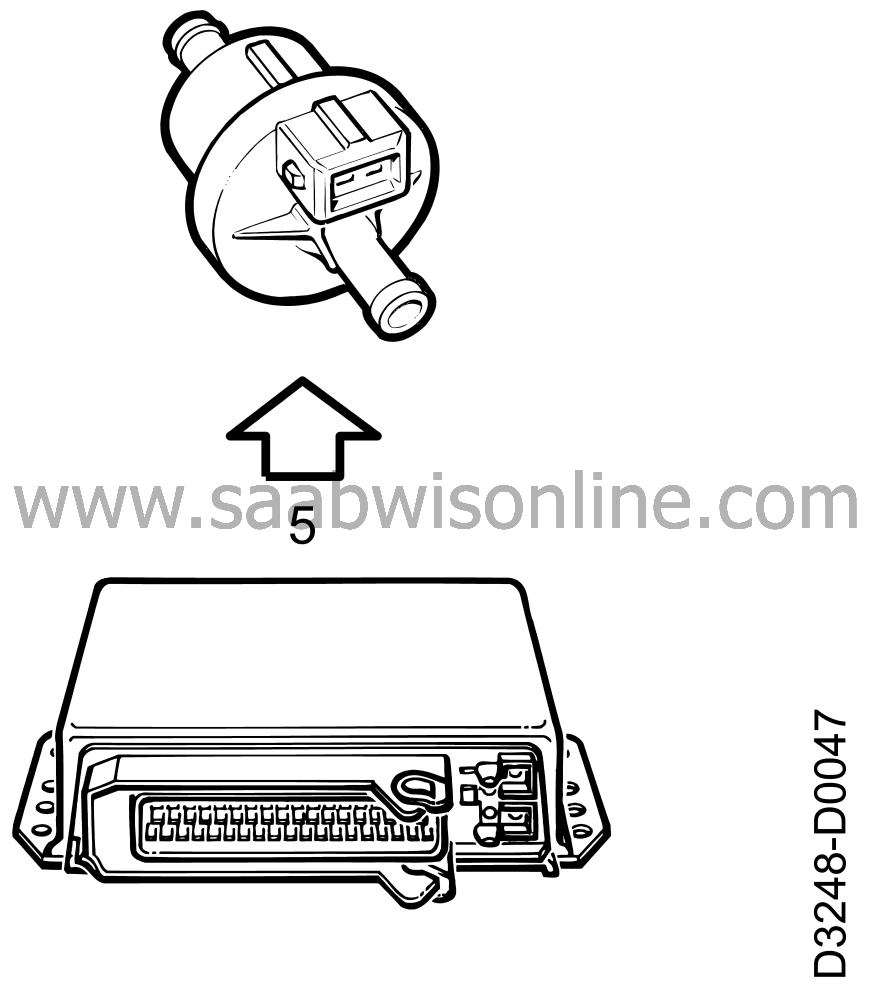Principle of operation, fuelevaporation
| Principle of operation, fuel evaporation |

| Evaporative emission canister |
The evaporative emission canister consists of a container filled with activated carbon, the purpose of which is to "buffer" the fuel fumes (gaseous hydrocarbons) from the tank and subsequently introduce them into the intake manifold for combustion.
The evaporative emission canister is connected by hoses to the fuel tank and the intake manifold, but is also in communication with the ambient air. Air is sucked in here and passed through the activated carbon, carrying the fuel fumes with it to the intake manifold.
| Canister Purge (CP) valve |
The EVAP canister purge valve consists of a solenoid valve mounted on the vacuum hose between the canister containing activated carbon and the intake manifold.
Operated by the control module on the basis of engine temperature, rpm and load, the valve opens under specific conditions and introduces the fuel fumes from the activated carbon into the intake manifold, where they are burnt together with the regular fuel-air mixture.
The valve is mounted on rubber cushioning blocks to prevent noise being propagated to the body when the valve is in operation.
The EVAP canister purge valve receives power from the main relay and opens when the control module grounds pin 5.
The signal is a 15 Hz square wave of about 0.5 V at idling speed. When the engine has attained normal operating temperature, the control module causes the EVAP canister purge valve (15 Hz) to open for one minute. The valve then closes for one minute. Following this, the valve opens for eight minutes, closes for one minute, and so on - 8 minutes, 1 minute, 8 minutes....
When the control module opens the valve, the opening duration of the injectors is slightly reduced. The control module compares the oxygen (lambda) sensor signals with the open and closed valve to adapt the values as necessary. The control module thus knows by how much the injection time should decrease when the valve is opened.
In the event of a break in the circuit, or if the connector is unplugged, the valve will close.



